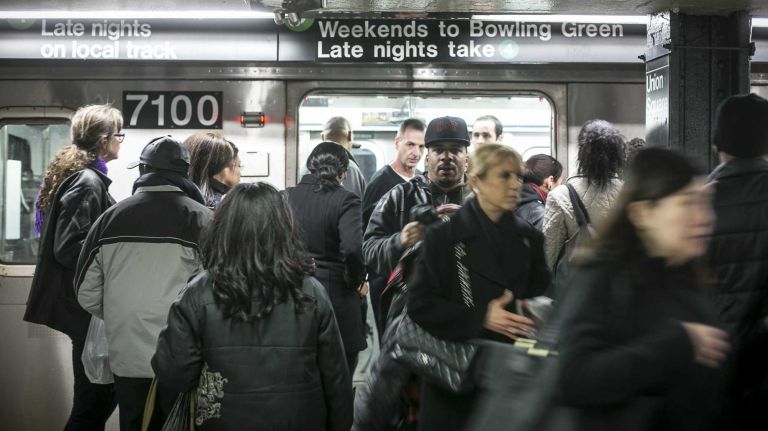
Gov. Andrew Cuomo and the MTA have hammered out a reasonable deal with the Transport Workers Union, which represents 34,000 New York City subway and bus workers.
As with all tough compromises in difficult times, this one has its pluses and minuses — but on balance it’s fair.
The five-year package would cost the MTA upward of $411 million. It includes an 8 percent pay raise — 1 percent retroactive hikes for 2012 and 2013 and 2 percent jumps in 2014, 2015 and 2016.
Those aren’t outlandish sums. New York workers are climbing out of the worst economic downturn since the 1930s, and the raises are below the city’s inflation rate.
Meanwhile, the deal would not make life immediately worse for the city’s beleaguered straphangers — the folks who dig into their pockets to help pay for the 7.5 million bus and subway rides that the MTA provides daily.
The deal won’t mean service cuts, which is great news. And it won’t mean higher fares beyond the increases that are already on tap. In November, the MTA said riders are looking at fare hikes of roughly 4 percent in 2015 and 2017.
But it’s a pity Cuomo and the MTA couldn’t shoehorn a few money-saving work-rule changes into the agreement. For example: The MTA could save big money in overtime costs with new rules that would allow MTA managers to schedule bus drivers more efficiently.
That’s not going to happen this time.
So how is the MTA going to pay for the raises?
The cash would come from shifting around money that had been earmarked for a pension fund and for retiree health care costs.
But if other labor contracts force the MTA to dip into pots set aside for the capital plan — straphangers could be looking at a problem.
The capital budget pays for everything from signaling to station reconstruction to completion of the first section of the Second Avenue subway. It’s crucial for the system to keep up with the city’s growth and renewal.
The agreement is hardly ideal. But it does offer a decent tradeoff between the needs of workers and those of riders.


















